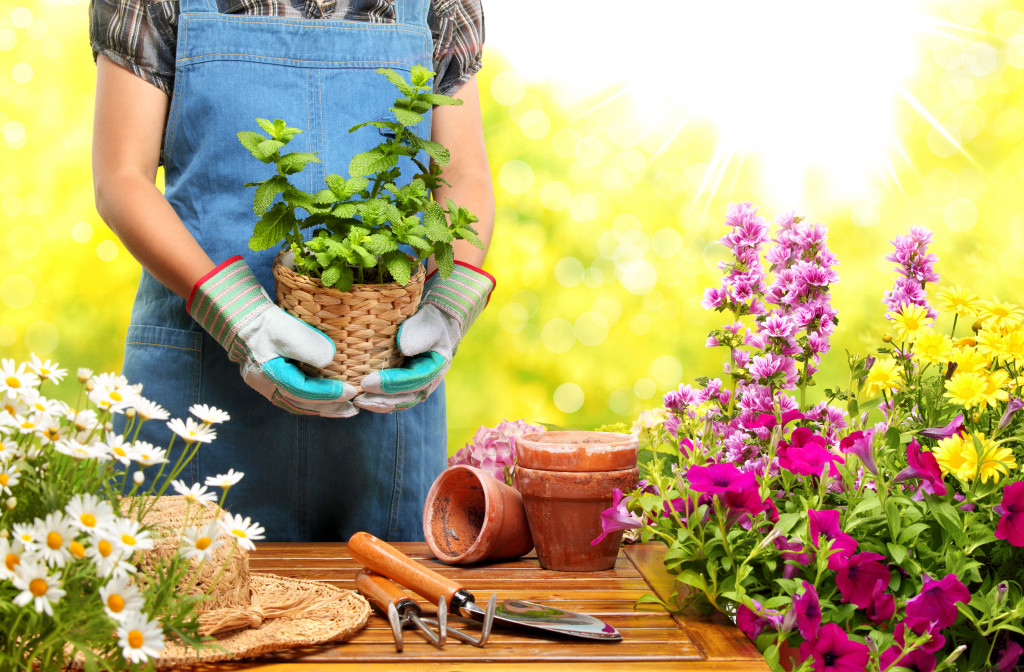People often move to the big city in search of better jobs and urban amenities. Yet living in today’s urban centers can carry a negative impact on your lifestyle. The cost of living is high, and floor space comes at a premium. Air pollution is a constant, both indoors and out. Going out and about can be stressful as you negotiate daily traffic and weave through dull facades of concrete and steel.
And that doesn’t even take into account the unhealthy environment you have to deal with at work. The typical office 9-to-5 exposes workers to an unpleasant combination of tedium, pressure, and hours of sitting in front of a computer screen. None of those things are good for your mental health.
Indoor gardens address many problems
At the end of the day, any city-dweller is likely to be exhausted. And after exposure to all those factors, who wouldn’t want to come home to a touch of greenery and natural calm? Certainly, conditions in the city make it difficult to have a garden. But with a little ingenuity and dedication, you can still manage to be an urban gardener.
Having an indoor garden can be the perfect antidote to many of the negative effects of city living. Research suggests that caring for indoor plants can improve your physical and mental health. The presence of plants in your home will help to detoxify polluted air while injecting a dose of nature into your daily routine. And if you grow herbs and vegetables, you’ll have free access to healthy ingredients for your home-cooked meals.
Solving logistical problems
Anyone who lives in a city will point out that making any sort of home improvement, let alone having a garden, will quickly run into limitations of space. And although green spaces are beneficial to our health and well-being, gardening does incur costs. You need to invest some time, money, and sweat equity to grow plants. Why not visit a local park instead?
Addressing these objections will require a focus on logistics. The issue of floor space can be solved by working with verticality. Different types of garden design will let you maximize the available surface area without taking up a lot of room in the house. Plants can be grown on shelves or stackable panels of wall planters. You can line up herbs across your window, or hang air plants by strings.
As for the cost of gardening, it can be very minimal. Indoor plants are far less susceptible to pests, diseases, and adverse weather. With the right strategy, you can have an indoor garden for under $50. That includes using clamp lights to supplement available sunlight or act as a standalone light source. You can easily fashion pots out of plastic bottles. Scout Craigslist or eBay for cheap (or free) sources of seed and soil. Granted, time and effort will still be required, but those are a given for any hobby.
When you consider the alternatives, an indoor garden absolutely shines in terms of value. Any sort of indoor plant also functions as décor; no need to spend more on that front. Functional plants, such as herbs and vegetables contribute to your nutrition. Shifting an hour of gaming or watching TV to something more productive is an opportunity, not a cost. And the health benefits will save you a bunch of long-term medical expenses.
Growing for yield

Of course, you shouldn’t expect to become self-sufficient from an indoor garden. But the economy of growing your own food can be improved with a few simple tips. Simply choosing the right plants will help. Low-fuss plants like green onions, kale, spinach, or arugula are reliably productive. If you have enough soil, carrots, potatoes, radishes, and tomatoes can be well worth the effort.
The surface of our walls can hide a lot of wires, plumbing, and structural features. Drywall experts such as Longhill Contracting know that their work needs to tread carefully around these things. In the same way, your garden soil isn’t just dirt; it contains a lot of hidden features. And as a gardener, understanding how to work the soil carefully will greatly boost the health and yield of your vegetables.
Make sure the soil you obtain is of good quality, with a balance of silt, sand, and clay. See to it that the pH and aeration are at acceptable levels. Enrich your soil periodically with compost. You can use indoor composting techniques to turn kitchen waste into vital organic matter.
Bear in mind, though, that if you want a really productive indoor garden, you may need to invest more in equipment such as high-output LED lighting or humidity controls. It’s your decision if you want to increase returns in this way. Rest assured, however, the benefits of an indoor garden are yours to enjoy even with the most minimal setup.